27 Refreshing Cold Soups to Beat the Heat and Wow Guests
Cold soups offer a delightful culinary escape during sweltering summer days, transforming ordinary meals into refreshing experiences.
Chilled delicacies that bring unexpected excitement to your dining table, redefining what soup can be.
Smooth, vibrant, and packed with intense flavors, they represent a clever solution for beating the heat.
Nutritionists praise their ability to hydrate and nourish without heavy preparation.
Global cuisines have embraced these cool creations, celebrating fresh ingredients and innovative cooking techniques.
Restaurants and home cooks alike experiment with unique combinations that surprise and delight palates.
Mediterranean and Eastern European traditions particularly excel in crafting these remarkable liquid dishes.
Here are 27 refreshing cold soups that will revolutionize your summer menu:
Refreshing Cold Soups for Sunny Days
When the weather warms, cold soups offer a crisp, flavorful escape. Chilled gazpachos, cucumber blends, and fruit soups are perfect for cooling off and savoring fresh produce.
Porra Antequerana
Porra antequerana is a rustic Spanish cold soup from Antequera that transforms simple peasant ingredients into a refreshing culinary experience.
Traditionally prepared by grinding bread, tomatoes, garlic, and olive oil with a mortar and pestle, this soup emerged from resourceful rural kitchens using available ingredients.
Peasant farmers originally crafted the dish with stale bread, ripe tomatoes, and seasonal vegetables as a nourishing meal.
Ham pieces and hard-boiled eggs frequently enhance the soup's protein content and flavor profile.
Modern variations sometimes include tuna as a topping, expanding the soup's versatility.
Olive oil provides a smooth, rich base that connects all ingredients.
Regional cooks continue preparing porra antequerana as a popular summer appetizer or tapa.
Mediterranean flavors and economic ingenuity define this simple yet satisfying Spanish soup.
Saltibarsciai
Cold beetroot soup blends Lithuania's summer culinary traditions with refreshing ingredients that surprise and delight.
Creamy kefir or buttermilk serves as the soup's smooth base, complementing pickled or boiled beetroots' vibrant color and earthy flavor.
Grated cucumbers and chopped hard-boiled eggs add texture and protein to this chilled dish.
Summer temperatures inspire Lithuanians to prepare this light, tangy soup as a quick meal or appetizer.
Generous sprinkles of fresh dill enhance the soup's bright profile and provide an herbal accent.
Potatoes often accompany the dish, offering a hearty side that balances the soup's cool temperature.
Traditional preparation involves letting ingredients meld together before serving extremely cold.
Families and friends typically enjoy this soup during warm months as a cooling and nutritious meal.
Vichyssoise
Vichyssoise is a luxurious cold French soup blending pureed leeks, potatoes, cream, and chicken stock with a complex historical legacy.
French chef Louis Diat popularized this elegant dish at New York's Ritz-Carlton in the early 20th century, drawing inspiration from his childhood potato and leek soup.
Culinary historians debate its precise origins, with some crediting Jules Gouffe's 1859 creation and others highlighting Diat's innovation.
French roots are strongly suggested by its ingredients and preparation method.
Traditionally served chilled, vichyssoise offers a smooth, silky texture that refreshes the palate.
Fresh chopped chives typically garnish the soup, adding a subtle onion-like flavor and visual appeal.
Named after Vichy, Diat's hometown in France, this soup represents a sophisticated blend of rustic ingredients and refined technique.
Cack
Cack is a zesty Turkish yogurt-based dip blending strained yogurt with crisp cucumbers and pungent garlic.
Mediterranean regions celebrate this versatile condiment as a cooling accompaniment to grilled meats and kebabs.
Herbs like dill, mint, and sometimes oregano enhance its complex flavor profile.
Olive oil and a splash of lemon juice or vinegar add tangy depth to the mixture.
Cack serves multiple culinary purposes from appetizer to side dish and soup-like refreshment.
Sumac and paprika occasionally contribute additional seasoning complexity.
Traditional preparation involves careful chopping and mixing of fresh ingredients.
Chilled serving temperature maximizes its refreshing qualities.
Tarator
Tarator is Bulgaria's beloved cold summer soup blending creamy yogurt with crisp cucumbers, aromatic garlic, and fresh dill into a refreshing culinary marvel.
Regional variations allow flexible ingredient substitutions like swapping walnuts for bread or cucumbers for carrots and lettuce.
Simple tarator versions replace yogurt with vinegar and water.
North Macedonian interpretations expand the traditional recipe with unique local twists.
Sunflower oil adds smooth richness while chopped dill provides bright herbal notes.
Small amounts of water or ice help achieve the perfect chilled consistency.
Served ice-cold, tarator offers immediate relief during scorching summer temperatures.
Bulgarian kitchens consider this soup a staple summer refreshment.
Salmorejo
Salmorejo is a velvety cold tomato soup from southern Spain that blends ripe tomatoes, stale bread, garlic, olive oil, and vinegar into a smooth, creamy texture perfect for hot summer days.
Spanish home cooks traditionally serve this refreshing Andalusian dish chilled and topped with chopped hard-boiled eggs and crispy jamón ibérico.
Its rich, intense flavor comes from high-quality ingredients blended until silky and uniform.
Restaurants often present salmorejo as a starter or appetizer, while home cooks enjoy it as a light meal.
Some variations include using the soup as a sauce for toast or omelets.
Regional differences exist in ingredient proportions and garnish styles.
Salmorejo offers a simple yet sophisticated taste of Spanish cuisine.
Restaurants and home kitchens across Spain celebrate this classic cold soup as a summer staple.
Ajoblanco
Ajoblanco are refreshing Spanish cold soup blending ancient Moorish culinary traditions with simple Mediterranean ingredients.
Originating in Andalusia centuries before tomatoes arrived, this white soup emerges from stale bread, fresh garlic, and almonds ground into smooth perfection.
Marcona almonds provide premium flavor when selecting ingredients for authentic preparation.
Traditional recipes incorporate water, vinegar, and abundant regional almonds into creamy liquid.
Modern versions sometimes include milk and green grapes for added complexity.
Chefs serve ajoblanco as elegant summer starter drizzled with olive oil.
Cool temperatures enhance its silky texture and subtle flavors.
Summer dining becomes extraordinary with this historic Spanish soup.
Naengmyeon
Naengmyeon are refreshing cold Korean noodles swimming in a tangy beef broth, distinguished by their unique blend of buckwheat and starch noodles that provide a distinctive chewy texture.
Korean culinary traditions trace these noodles back to North Korea, where buckwheat production was abundant before the Korean War.
Chilled ingredients like pickled radish, hard-boiled egg slices, and Korean pear complement the noodles' complex flavor profile.
Mustard and vinegar seasonings add sharp, bright notes that enhance the broth's coolness.
Historically served during winter with traditional kimchi, naengmyeon evolved into a beloved summer refreshment across Korea.
Korean restaurants now feature this dish as a popular seasonal specialty that balances temperature and taste.
Diners enjoy the noodles' unique combination of textures and temperatures, making it a memorable dining experience.
Regional variations showcase different preparation methods and garnish styles, reflecting local preferences.
Ab Doogh Khiar
Ab doogh khiar is a cooling Iranian summer soup blending yogurt's tangy richness with crisp cucumber freshness.
Persian families create this refreshing dish by mixing thick yogurt with chopped cucumbers, aromatic herbs like mint and dill, and sometimes rosewater for extra complexity.
Small pieces of toasted flatbread add satisfying crunch to the smooth yogurt base.
Chopped walnuts provide nutty undertones that complement the soup's creamy texture.
Iranians traditionally serve the soup chilled, making it a perfect antidote to hot summer days.
Salt and black pepper enhance the soup's subtle flavors, creating a balanced and light meal.
Some variations include adding dried rose petals or raisins for additional depth.
Water or carbonated liquid helps thin the yogurt to an ideal consistency.
Auksta Zupa
Auksta zupa stands out as Latvia's signature summer soup, boasting a striking deep pink hue that instantly catches the eye.
Beets create the soup's vibrant color and distinct flavor, blending seamlessly with kefir, cucumbers, and milk sausage.
Hard-boiled eggs add protein and texture to this refreshing cold dish.
Fresh dill and scallions provide an aromatic green accent that complements the soup's creamy base.
Home cooks typically season the mixture with salt and pepper before chilling it thoroughly in the refrigerator.
Traditional dark bread serves as the perfect accompaniment to this cooling summer staple.
Latvians consider the soup a warm-weather delicacy, rarely finding it on restaurant menus during winter months.
Vinegar often adds a final tangy note that balances the soup's rich ingredients.
Pyongyang Naengmyeon
Pyongyang naengmyeon represents a refreshing North Korean noodle dish bursting with complex flavors and cultural significance.
Buckwheat noodles form the base of this chilled culinary creation, typically served in a large metal bowl with tangy broth.
Cold meat strips like beef or chicken complement the thin cucumber and Korean pear slices nestled throughout the dish.
Ice chunks keep the broth exceptionally cool and crisp.
Radish kimchi adds sharp, fermented notes to balance the overall taste profile.
Traditional preparation involves long, uncut noodles symbolizing longevity and good health.
Condiments like spicy mustard, vinegar, and sugar allow diners to customize their flavor experience.
Hard-boiled egg slices crown this iconic summer dish, creating a satisfying and cooling meal perfect for hot weather.
Meggyleves
Hideg meggyleves is a refreshing Hungarian summer soup blending sweet and tangy sour cherries with smooth sour cream, creating a unique cold dessert that originated in rural kitchens across Hungary.
Hungarian families traditionally prepare this chilled dish during cherry season, transforming ripe cherries into a silky, cool liquid dessert.
Sweet-tart cherries are carefully pitted and simmered with sugar to extract their intense flavor.
Water and sour cream get whisked together to create the soup's creamy base.
Subtle spices like cinnamon sometimes enhance the cherry's natural sweetness.
Cool temperatures make this soup a perfect warm-weather treat.
Generations have enjoyed this simple yet elegant summer dish.
Restaurants and home cooks throughout Hungary continue to serve hideg meggyleves as a beloved seasonal specialty.
Khaladnik
Khaladnik represents a refreshing Belarusian cold beet soup originating in the late 18th century as a summer meal solution.
Bright magenta in color, this traditional dish combines boiled beets with tangy kefir for a unique flavor profile.
Crisp cucumbers, sharp spring onions, and fragrant dill create a complex taste experience in each spoonful.
Belarusian families typically serve khaladnik chilled as a light and nutritious summer meal.
Sour cream adds creamy richness when dolloped on top of the soup.
Fresh dill garnishes enhance the visual appeal and herbal notes.
A hard-boiled egg often accompanies the dish for extra protein.
Rural Belarusian households developed this soup as an ingenious way to use seasonal garden vegetables during warm months.
Gazpacho
Gazpacho is a chilled Spanish soup that revolutionizes summer refreshment with its vibrant blend of raw vegetables and tangy flavor profile.
Spanish farmers originally created this cold soup as a nourishing midday meal for workers laboring under intense summer heat.
Crushed ripe tomatoes form the soup's signature base, mixed with finely chopped cucumbers, onions, and peppers.
Olive oil and vinegar provide a sharp, cooling accent to the vegetable medley.
Croutons add delightful crunch and texture to the liquid mixture.
Regional variations across Spain include unique versions like ajo blanco, a white gazpacho made with garlic, bread, and almonds.
Modern interpretations have expanded gazpacho's ingredients to include unexpected elements like watermelon and cantaloupe.
Restaurants and home cooks now serve this versatile soup as a popular summer appetizer.
Dovga
Dovga represents Azerbaijan's national yogurt soup bursting with fresh herbs like dill, mint, and coriander that transforms traditional dairy into a versatile seasonal comfort.
Azerbaijani families prepare this creamy soup as a refreshing summer cooler or warming winter meal served in deep traditional kasa bowls.
Yogurt forms dovga's rich base, simmered carefully with green herbs to create a smooth, tangy liquid.
Fresh ingredients blend seamlessly to deliver a balanced texture and complex flavor profile.
Herbs contribute brightness and depth to the soup's overall character.
Mint provides a cooling sensation while coriander adds subtle earthiness.
Regional variations might include rice or additional vegetables for extra substance.
Mediterranean and Middle Eastern culinary influences shine through this simple yet sophisticated soup.
Okroshka
Okroshka is a refreshing Russian cold soup blending chopped ingredients in a tangy kvass or kefir base that originated from traditional food preparation techniques.
Russian home cooks expertly mix vegetables and meats in equal proportions, creating a balanced summer dish with complex flavors.
Meat selections range from sausages and ham to smoked fish and tongue, providing protein diversity.
Cucumbers, scallions, dill, radishes, and hard-boiled eggs form the soup's standard vegetable foundation.
Some regional variations incorporate unexpected ingredients like cherries or apples for unique taste profiles.
Russian word "kroshit" meaning "to crumble" directly inspired the soup's descriptive name.
Summer temperatures make this cold soup particularly popular across Russia.
Generations have enjoyed this versatile dish as a refreshing meal that combines multiple ingredients in one satisfying bowl.
Chodnik Litewski
Chodnik is a refreshing Polish cold soup bursting with vibrant beetroot flavor and creamy dairy undertones.
Summer's most beloved liquid dish combines tender simmered beets with crisp cucumbers and peppery radishes.
Polish kitchens transform these simple ingredients into a smooth, chilled mixture using yogurt, kefir, or sour cream.
Traditional preparation involves blending cooked beets until silky and combining them with finely chopped fresh vegetables.
Regional variations add unique touches like diced egg or fresh herbs for extra complexity.
Rural and urban Polish families enjoy this cooling soup during hot summer months.
Nutritious and light, chodnik offers a perfect balance of earthy and tangy flavors.
Regional culinary traditions keep this simple yet elegant soup alive in Polish cuisine.
Kongguksu
Kongguksu is a refreshing Korean summer noodle dish featuring silky somyeon noodles swimming in a creamy, chilled soy milk broth.
Korean home cooks craft this cooling meal by blending cooked soybeans into a smooth, rich liquid that instantly quenches summer heat.
Traditional preparation involves grinding soybeans to create an authentic base, sometimes enhanced with ground sesame seeds or nuts for extra depth.
Sesame seeds and sliced cucumber often garnish the bowl, adding crunch and visual appeal.
Protein-packed soybeans form the heart of this nourishing dish, making it both satisfying and light.
Restaurants and street vendors across Korea serve kongguksu as a popular seasonal specialty.
Koreans consider this dish a perfect summer comfort food that cools and replenishes.
Chilled to perfection, kongguksu offers a unique blend of simplicity and complex flavors.
Ovdukh
Ovdukh is a cooling Azerbaijani summer soup that quenches thirst and beats heat with its creamy yogurt base.
Cold yogurt blends smoothly with boiled water, creating a silky liquid foundation for the dish.
Chopped cucumbers and spring onions add crisp texture and fresh flavor to the mixture.
Fragrant herbs like cilantro, dill, and purple basil infuse the soup with aromatic depth.
Azerbaijani families often prepare this simple soup as a refreshing meal during hot summer months.
Regional variations might include subtle ingredient modifications depending on local preferences.
Traditional preparation involves carefully mixing ingredients to achieve perfect consistency.
Served chilled, ovdukh provides instant relief from sweltering temperatures.
Naengguk
Naengguk is a refreshing South Korean cold soup that provides instant relief during sweltering summer days.
Korean households eagerly prepare these chilled soups with various ingredients like cucumbers, spring onions, and wakame seaweed.
Cool water mixed with vinegar forms the base of this traditional summer dish.
Seasonal vegetables and seafood often enhance its crisp flavor profile.
Each region offers unique variations reflecting local agricultural produce.
Home cooks carefully balance tangy and fresh elements in their recipes.
Restaurants and street vendors also serve multiple naengguk styles throughout summer months.
Gazpacho De Mango
Mango gazpacho represents a vibrant Spanish cold soup bursting with tropical flavors and refreshing ingredients.
Summer heat melts away when you savor this smooth blend of ripe mangoes, cucumbers, tomatoes, and peppers.
Sweet mangoes provide a bold foundation for the chilled soup, complemented by zesty jalapeños and aromatic herbs like cilantro.
Traditional gazpacho techniques transform fresh produce into a silky liquid with remarkable depth.
Onions, shallots, and garlic add complex undertones to each spoonful.
Olive oil and citrus juices create a perfect balance of richness and acidity.
Blending ingredients creates an elegant consistency that captures Spanish culinary traditions.
Orange or lime juice delivers a final bright touch to this refreshing summer dish.
Chilled Avocado Soup
Chilled avocado soup embodies California's innovative culinary spirit, transforming creamy avocados into a refreshing summer dish.
Californian chefs pioneered this cold soup in the 1930s with the introduction of the Waring blender, revolutionizing kitchen preparation techniques.
Ripe avocados serve as the soup's primary ingredient, blended smoothly with chilled, defatted chicken stock and heavy cream.
Salt, black or white pepper, and lemon juice balance the soup's rich flavor profile.
Home cooks carefully puree the ingredients to achieve a silky smooth consistency.
Elegant presentation matters, with the soup served in ice-lined bowls.
Garnishes like salsa, minced herbs, and red or orange tobiko caviar add visual appeal and textural contrast.
Californian cuisine's creativity shines through this inventive, cool summer starter.
Arjamolho
Arjamolho is a refreshing cold soup originating from Portugal's Algarve region that transforms stale bread into a cooling summer staple.
Farmers and fishermen historically created this simple dish to prevent food waste by using leftover bread and garden vegetables.
Portuguese households combine chopped tomatoes, green peppers, garlic, and bread in a bowl, seasoning the mixture with olive oil, oregano, and wine vinegar.
Water helps blend the ingredients into a light, liquid consistency that serves as both a soup and salad.
Regional variations might include additional herbs or slight adjustments to ingredient proportions.
Families traditionally prepare arjamolho during hot summer months as a quick, nutritious meal.
Mediterranean culinary techniques shine through this economical recipe that maximizes ingredient potential.
Rural Portuguese communities continue to enjoy this classic dish as a testament to their resourceful cooking traditions.
Mazamorra
Mazamorra is a refreshing Andalusian cold soup blending rustic bread, garlic, olive oil, salt, and vinegar into a creamy almond-thickened delicacy from southern Spain.
Spanish families have enjoyed this traditional dish for generations, particularly in Cordoba's scorching summer months.
Ground almonds provide a distinctive smooth texture that sets mazamorra apart from other regional soups.
Vinegar adds a tangy undertone that balances the soup's rich, nutty base.
Cooks often garnish the soup with hard-boiled eggs, chopped apples, grapes, or small pieces of ham for added complexity.
Restaurant menus highlight mazamorra as a classic regional specialty that showcases Andalusian culinary traditions.
Regional variations exist, with some families adding different ingredients based on local preferences.
Ancient cooking methods and simple ingredients make mazamorra a timeless Spanish comfort food.
Sopeao
Sopeao is a refreshing cold soup from Sevilla, Andalusia, blending tomatoes, stale bread, olive oil, and vinegar into a creamy summer staple.
Regional cooks craft this traditional dish by crushing ripe tomatoes with garlic, onions, and bell peppers into a smooth base.
Crusty bread transforms the soup, absorbing its rich flavors and giving the dish its name from the verb "sopear" meaning to soak.
Hard-boiled eggs and tuna often enhance the soup's texture and protein content.
Olive oil adds a silky richness to the mixture, creating a balanced and cooling meal.
Served in wide platters or individual plates, sopeao offers a perfect antidote to scorching Andalusian summers.
Each spoonful carries the essence of Spanish countryside cooking.
Salt and vinegar provide a final tangy kick to this beloved regional specialty.
Cold Seaweed-Cucumber Soup (Miyeok-Oi-Naengguk)
Miyeok-oi-naengguk are refreshing Korean cold soup waters packed with crisp vegetables and seaweed that deliver intense summer cooling sensations.
South Korean kitchens traditionally prepare this dish as a light and zesty summer meal with wakame seaweed as its primary ingredient.
Cold water blends seamlessly with chopped vegetables like cucumbers, cherry tomatoes, and hot peppers.
Sesame seeds sprinkle across the surface for added texture and nutty flavor.
White vinegar and sugar create a tangy base that heightens the soup's bright profile.
Garlic and scallions contribute sharp undertones to the liquid.
Salt balances the complex flavor combinations.
Ice cubes ensure the soup remains chillingly cold when served.
Cool Island Soup
Cool island soup radiates tropical freshness with its smooth blend of exotic fruits and sparkling water, creating a vibrant summer beverage that instantly cools and refreshes.
Summer temperatures inspire this chilled fruit soup featuring ripe pineapple, sweet cantaloupe, juicy papaya, and tangy apricots.
Sparkling water adds light effervescence to the fruit mixture, while fresh lime juice provides a zesty undertone.
Cooks puree the ingredients until smooth and silky, ensuring a uniform consistency.
Refrigeration for at least four hours intensifies the flavors and ensures optimal chilliness.
Serving the soup cold maximizes its refreshing qualities and enhances the natural fruit sweetness.
Each spoonful delivers a burst of tropical essence that transports you to a breezy island paradise.
Guests appreciate this simple yet elegant summer treat as a light and invigorating alternative to traditional desserts.
How Do Chefs Chill Cold Soups Quickly and Safely?
Chilling cold soups rapidly and safely is essential in professional kitchens to preserve flavor, texture, and food safety:
These methods ensure soups cool below 40°F (4°C) within recommended time frames, maintaining safety and quality.

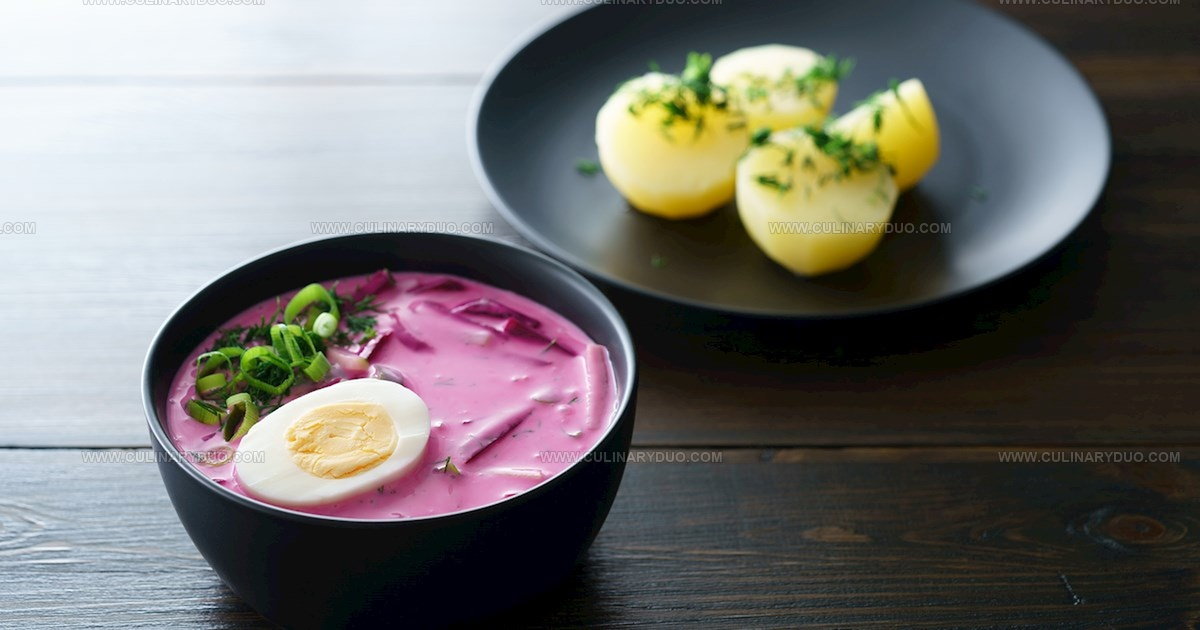
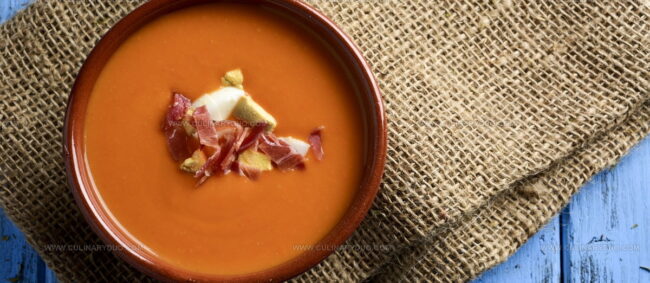
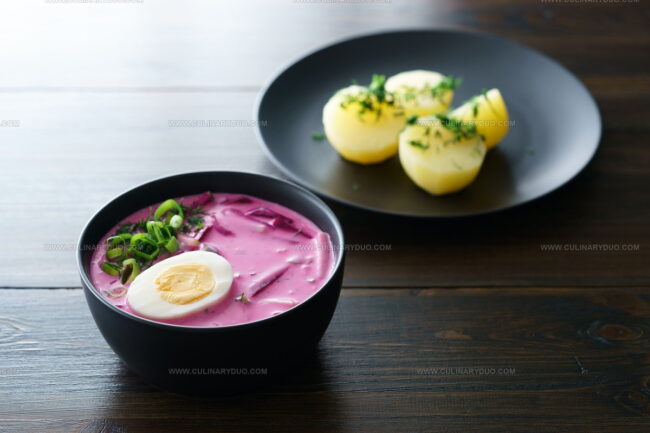
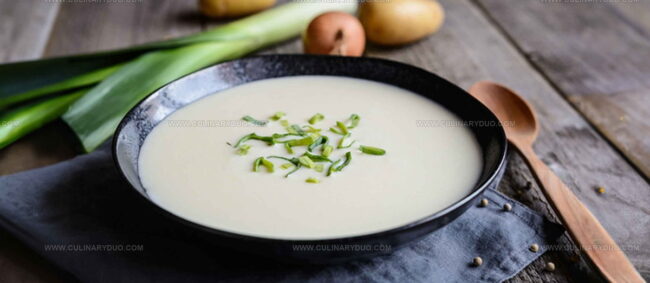
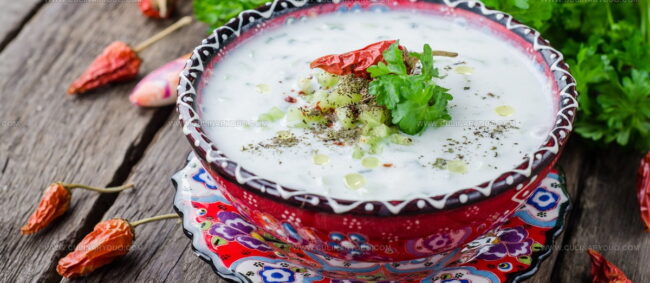
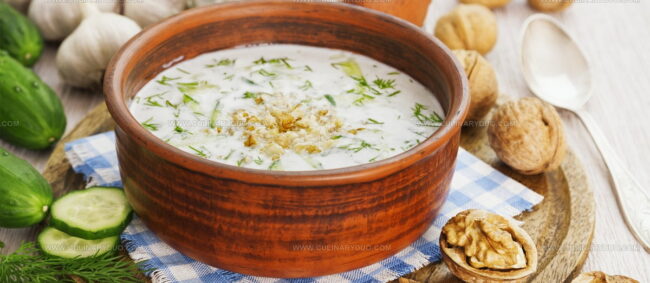
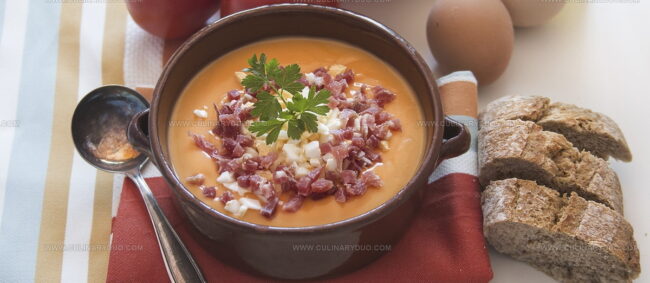
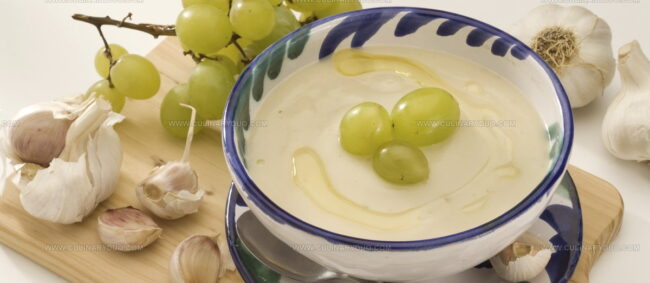
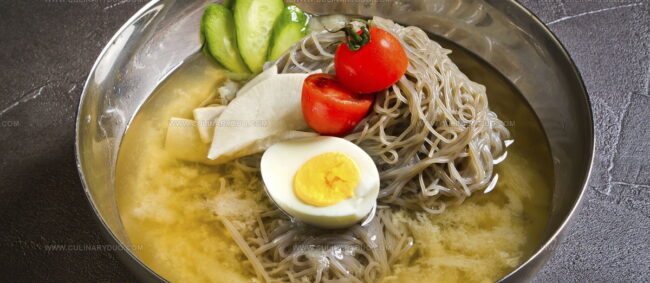
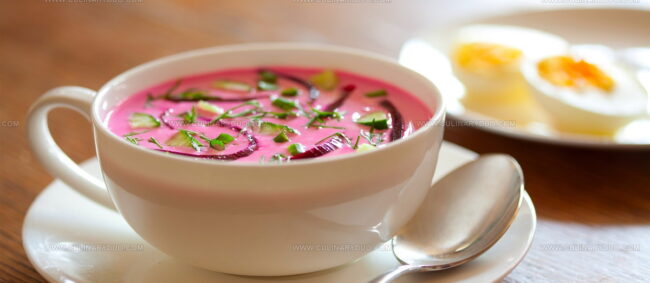
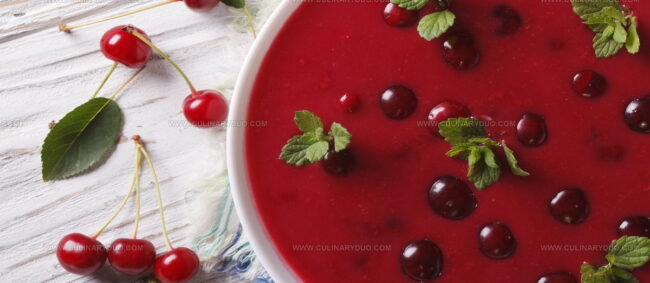
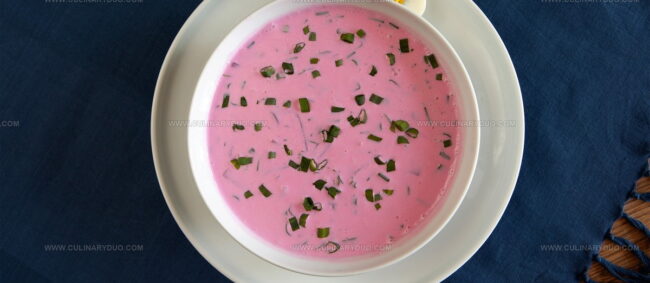
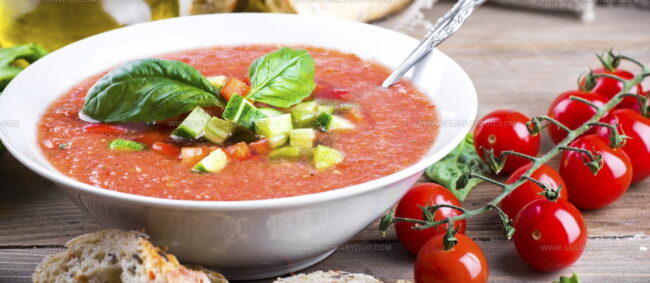
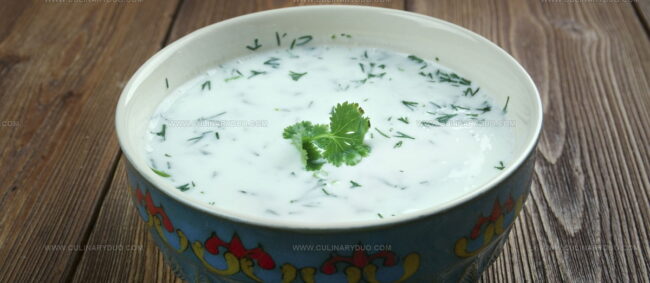
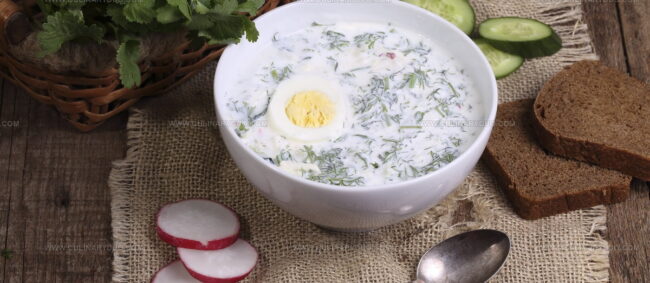
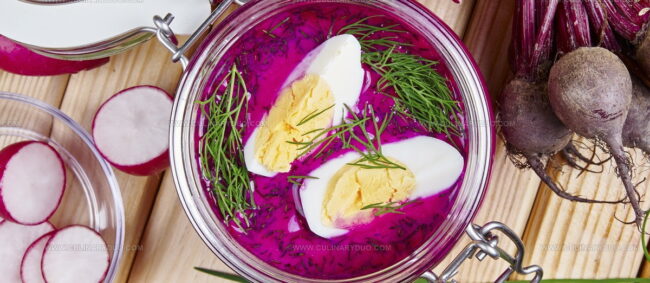
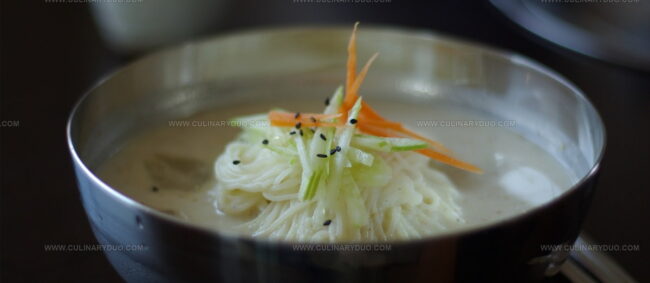
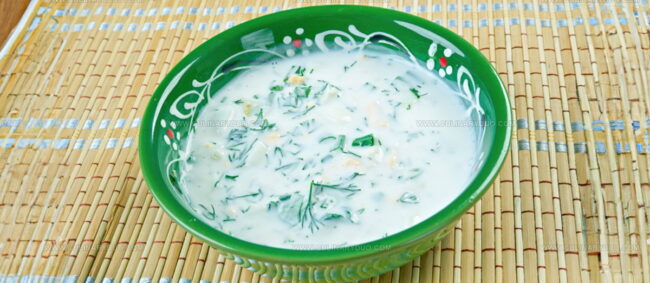
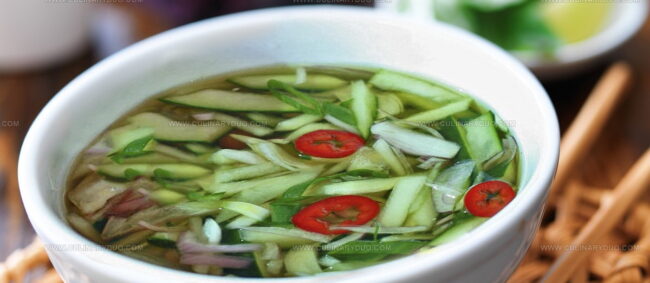
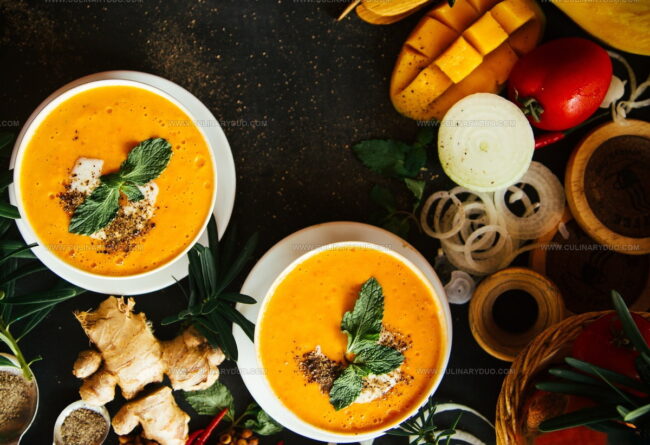
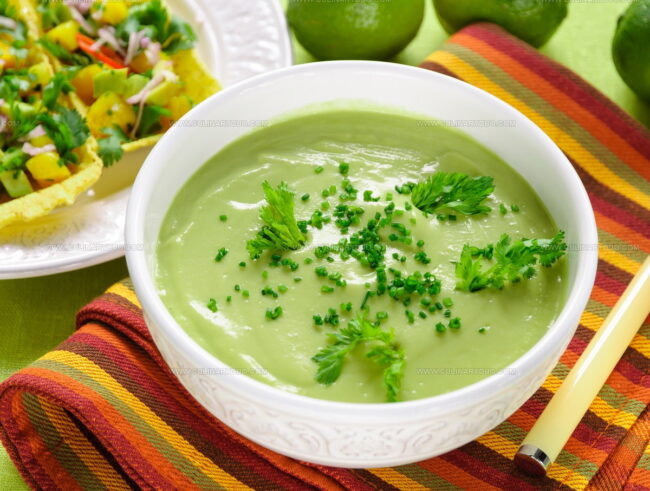
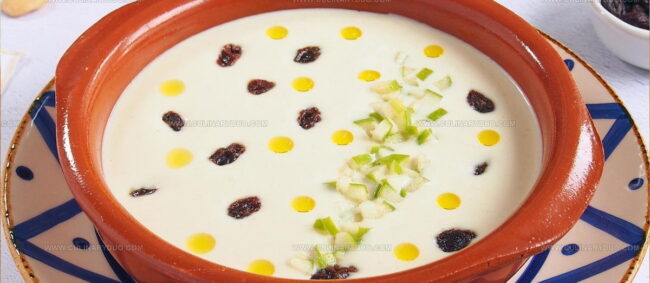
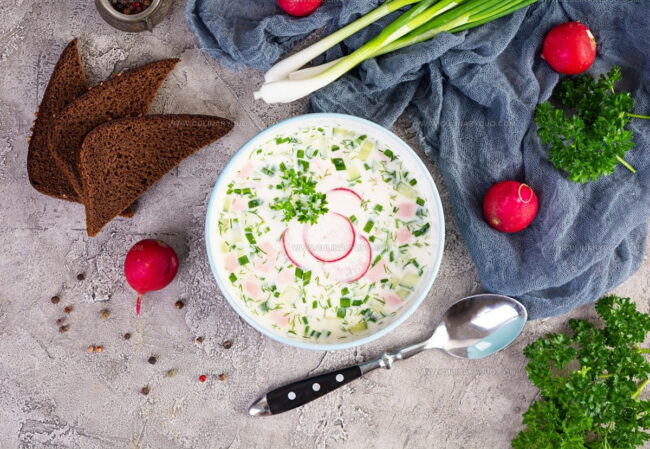
Michael Reyes
Founder & Lead Recipe Developer
Expertise
Education
Santa Fe Community College
Michael’s love for cooking runs deep, rooted in the bold, colorful flavors of his New Mexico upbringing.
After earning his Culinary Arts Certificate from Santa Fe Community College, he spent years sharpening his skills in kitchens that celebrated traditional Southwestern and Latin American dishes.
He believes cooking should feel approachable and fun, never complicated. When he’s not stirring up new recipe ideas, Michael’s out hiking scenic trails, chatting with farmers at local markets, or chasing the perfect sunset shot for inspiration.